Key takeaways:
- Community leadership in breakdancing emphasizes empowering individuals and fostering connections among members.
- A strong community boosts creativity and resilience, providing support during challenges and enhancing artistic expression.
- Leaders face challenges like maintaining motivation, navigating conflicts, and ensuring inclusivity among diverse dancers.
- Successful engagement strategies include creating authentic connections, organizing collaborative events, and maintaining consistent communication.
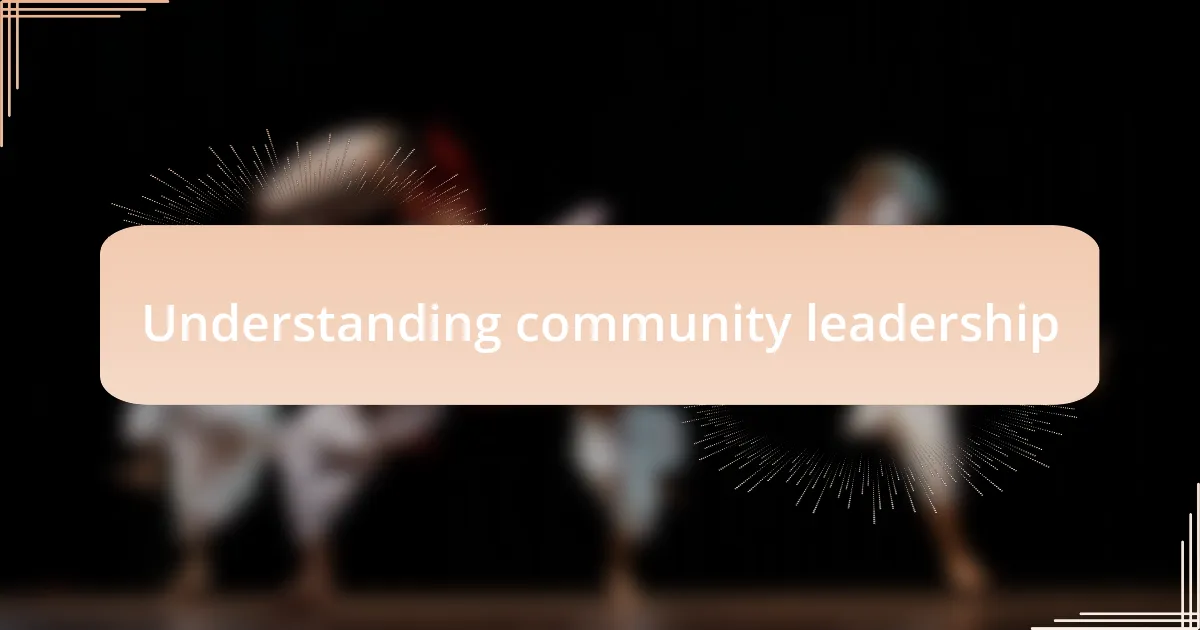
Understanding community leadership
Community leadership involves more than just guiding a group; it’s about fostering connections and empowering individuals within that community. I remember a time when I organized a local breakdancing workshop. Initially, I was anxious about my ability to lead, but witnessing the dancers grow in confidence made me realize that leadership is truly about uplifting others.
Have you ever noticed how effective leaders inspire trust and encourage open communication? During my journey, I found that creating a safe space where everyone felt valued was crucial. When I held regular open-mic sessions, participants expressed their thoughts and ideas freely, which enriched our breakdancing collective and strengthened our bonds.
Ultimately, understanding community leadership means acknowledging that everyone plays a part. I recall how a shy dancer once shared their unique style at one of our jams. It was a pivotal moment, showing me that true leadership is about recognizing and celebrating individual contributions while uniting everyone towards a common goal.
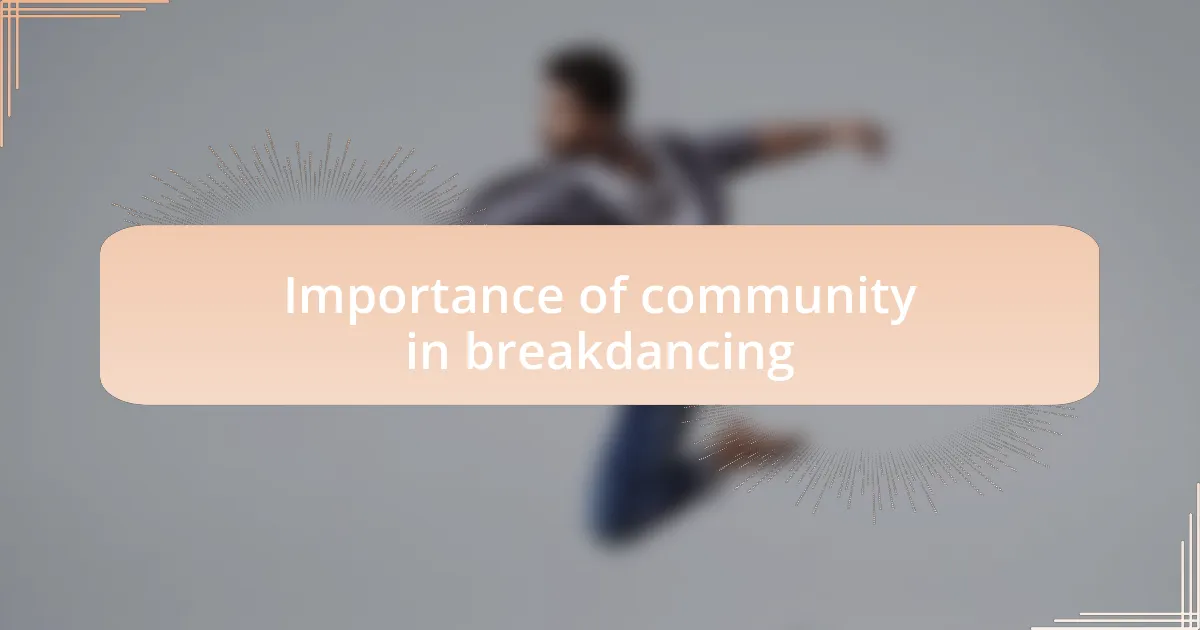
Importance of community in breakdancing
The sense of community in breakdancing is vital because it fosters creativity and inspires collaboration. I’ll never forget the energy of a local jam where we all swapped moves and styles. It was incredible to see how one dancer’s unique twist on a classic move sparked others to experiment and innovate. Isn’t it amazing how sharing our skills can lead to a whole new level of artistic expression?
Moreover, a strong community provides support during challenges, whether it’s improving technique or facing the pressure of competitions. I recall a time when I stumbled in a battle, feeling defeated. Yet, the cheers and encouragement from fellow dancers reignited my passion. Community is that safety net; it reminds us that we are not alone on this journey, and it boosts our resilience.
Finally, the connections we build within the breakdancing community extend beyond dance itself. These relationships often evolve into friendships that enrich our lives. Do you remember sharing a late-night practice session with friends, laughing and learning together? Those moments create lasting bonds that make the hard work and dedication worthwhile, reminding us that breakdancing is as much about the people as it is about the moves.
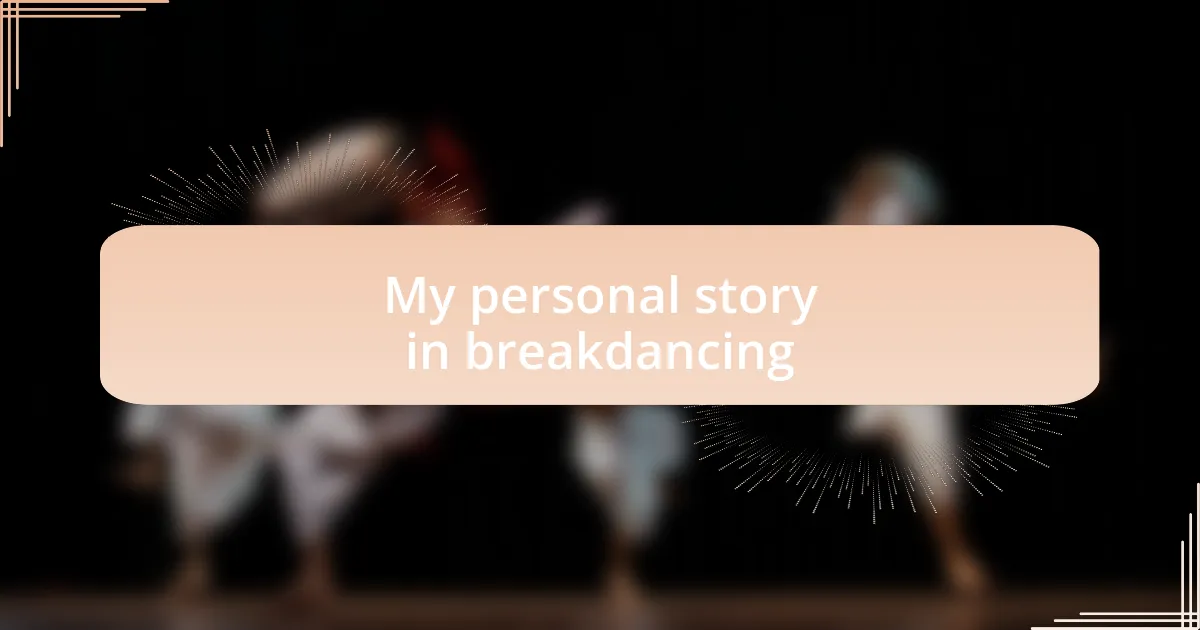
My personal story in breakdancing
It feels like just yesterday when I first stepped into the world of breakdancing. I was a shy teenager, captivated by the fluid movements and expressive styles of the b-boys and b-girls I watched. I remember the first time I attempted to mimic a power move—I landed flat on my back but got up laughing, already hooked by the fun and camaraderie that filled the air.
During those early days, every practice session was a rollercoaster of emotions. I vividly recall a workshop where I was too nervous to break out of my comfort zone. But then, after watching a more experienced dancer climb their way through their fears, I felt a spark ignite. It drove me to experiment, to embrace the joy of making mistakes, and it taught me that vulnerability is an essential part of growth in our community.
As I immersed myself deeper, breakdancing evolved into more than just a hobby; it became a lifeline. I still think back to those weekends spent training with close friends, sharing not just our dance moves but also our life stories. Those candid conversations, paired with rhythmic beats, created a bond that was unshakeable. Have you ever felt that? The way dance can weave people together, forging connections that run deep? It’s moments like those that truly illustrate the heart of the breakdancing community for me.
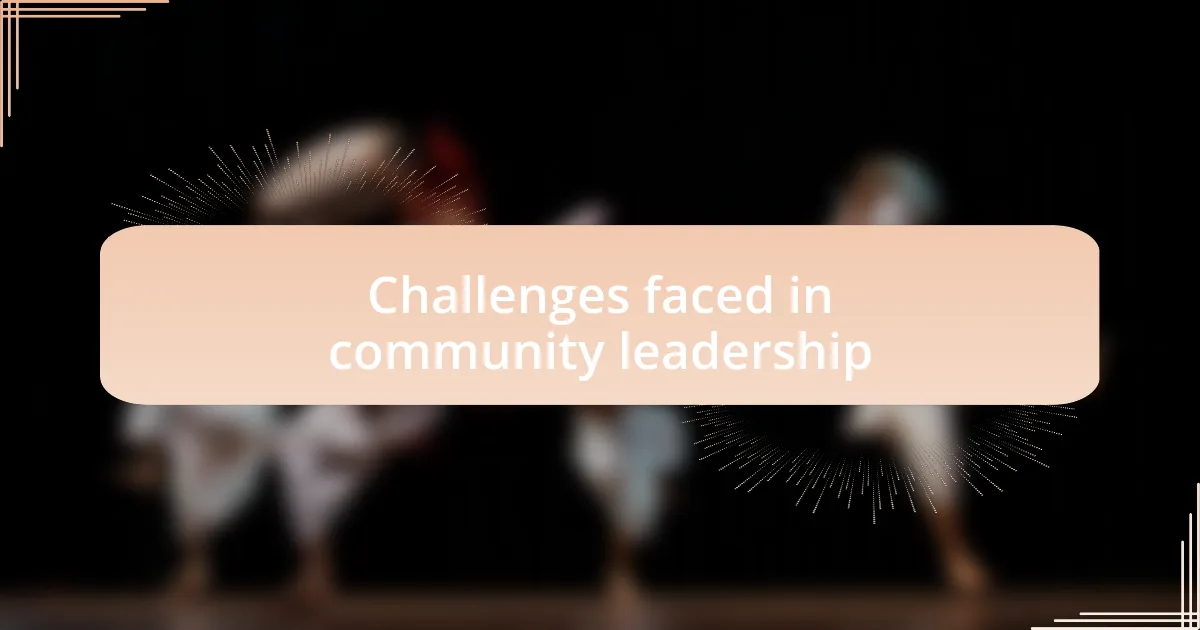
Challenges faced in community leadership
Leaders in the breakdancing community often encounter the challenge of maintaining motivation among diverse groups. I remember organizing a local jam, and it was tough to keep everyone engaged, as each dancer had different expectations and styles. How do you bridge that gap? It requires understanding each dancer’s perspective and finding common ground, which can sometimes feel like herding cats.
Navigating conflicts can also be a significant hurdle. Just last year, I faced a disagreement between two dancers over the choreography for a group performance. It was uncomfortable, as emotions were high on both sides. I had to step in to facilitate a conversation, but it made me realize: how do you balance being a mediator while also respecting each individual’s input? This delicate dance of diplomacy can be draining yet essential for a thriving community.
Lastly, one of the toughest challenges is ensuring inclusivity. I’ve seen too many talented dancers shy away from participating due to feeling out of place. At one event, I made a point to spotlight newcomers, and it was uplifting to see their confidence blossom in front of a supportive crowd. But it left me pondering—how can we all do better to ensure that every voice is heard and that everyone feels they truly belong? Building an inclusive space requires constant effort and reflection.
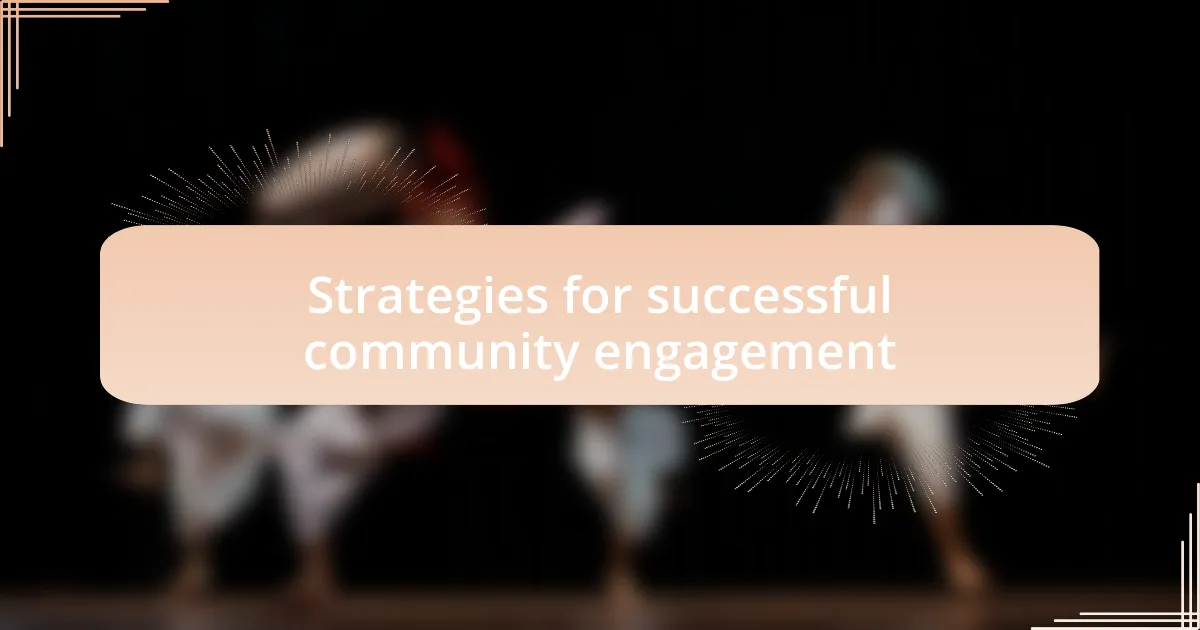
Strategies for successful community engagement
Creating authentic connections is key to successful community engagement. I recall hosting a workshop where I encouraged participants to share their personal breakdancing stories. The room buzzed with energy as dancers opened up about their journeys, fostering a sense of belonging. Have you ever felt that shift when shared experiences bring people together? It’s a powerful reminder that engaging on a personal level can deepen relationships within the community.
Another strategy that has proven effective is organizing collaborative events. I remember collaborating with local artists to host a graffiti and breakdancing fusion event. Not only did it attract a diverse crowd, but it also allowed for creative expression that resonated with different interests. How often do we think about integrating contrasting art forms to enrich our community? By cross-pollinating our passions, we energized the scene and allowed everyone to feel invested in the outcome.
Lastly, consistent communication cannot be overlooked. After launching a social media group dedicated to our community, I observed an increase in interactions. Members began sharing their own resources, showcasing events, and even organizing practice sessions together. Isn’t it amazing how a simple digital platform can create such vibrant discussions? Keeping everyone in the loop ensures that voices are continuously heard, cultivating an environment where everyone feels connected and empowered to contribute.